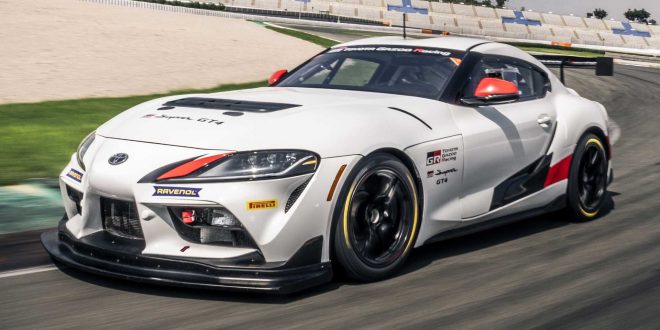Toyota Motor Corp. isn’t slowing down in its push to help achieve a carbon-free society but is even speeding up its effort.
The automaker announced on April 22 that it will enter a vehicle in motor racing powered by a carbon-free hydrogen engine.
Toyota said it can utilize existing technologies to develop a hydrogen engine expected to achieve zero emissions at a low cost. It will use the racing circuit as a testing ground to develop the necessary technologies over the long term.
“Japan has the accumulated (know-how) in automobile (technology), and there are ways to make use of it to reduce carbon emissions,” said Toyota President Akio Toyoda. “The hydrogen engine is one of them.”
Hydrogen engines burn hydrogen instead of gasoline. The mechanism is similar to that of gasoline engines, allowing the automaker to divert most of the components.
Toyota is set to participate in a 24-hour endurance race that starts on May 21 at the Fuji Speedway track in Oyama, Shizuoka Prefecture. It will enter a race car based on its Corolla Sport equipped with a hydrogen engine. It will also participate in other endurance races to collect data for technology development.
Toyota has already commercially released a car that runs on hydrogen. The Mirai is a fuel cell vehicle, which is a type of electric vehicle that runs on electricity generated through the chemical reaction between the hydrogen and oxygen in the air.
Both hydrogen-fueled and fuel cell vehicles don’t emit carbon dioxide when they are driven. But hydrogen engines emit exhaust gas, which includes nitrogen oxide.
Toyota did not present an outlook on the commercialization of the hydrogen engine in its announcement on April 22.
But amid the global decarbonization trend, Japan, the United States and other countries presented their ambitious goals to reduce carbon emissions during the Leaders Summit on Climate that started the same day.
Under these circumstances, automakers are stepping up efforts to develop electric vehicles. But such cars are costly to produce because they use expensive batteries, while it requires major investments to develop new technologies.

 Iran Energy News Oil, Gas, Petrochemical and Energy Field Specialized Channel
Iran Energy News Oil, Gas, Petrochemical and Energy Field Specialized Channel



